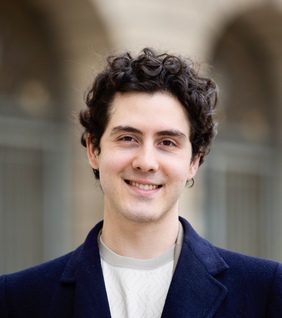
KENAN OKTAY
SINGER | VOICE TEACHER
THE VOCATHLETIC SYSTEM™ FOR VOICE, SINGING & SPEECH
A universal holistic training method combining tradition, science, and athletic principles designed to find, express, and optimize the natural voice
INTRODUCTION
The Vocathletic System™ is the culmination of my voice teacher Bülent Güneralp's three-decade-long transformational journey, which helps students to realize vocalism, express the natural voice easily, and develop it organically.
To read more about the origin of the Vocathletic System and Mr. Güneralp's vocal journey please visit his website here: https://www.bulentguneralp.com/the-vocathletic-system
What Is the Vocathletic System™?
It is a holistic training system built on tradition, science, and Mr. Güneralp's ongoing discoveries as a singer, voice teacher, and athlete. The system helps students:
- Realize vocalism
- Express the natural voice with ease
- Develop it organically
By applying athletic principles of mind-body control, nutrition, and growth to vocal training, students learn efficiency — sending brain signals only to the muscles that truly need to be engaged for vocalization.
The Vocathletic System™ explains the whats, hows, and whys of vocal technique in a way that is clear, immediately applicable, and produces unequivocal results.
Key qualities: natural, simple, direct, effective.
-----------------
Technical Inventions and Characteristics of the Vocathletic System™
The following are core technical concepts that define the Vocathletic System™ — principles, mechanisms, and exercises rooted in physiological awareness, energetic efficiency, and signal discipline:
- Vertical engagement of the lowest abdominal muscles to create pneumatic energy through the syringe-like use of the body.
- Riding on the pneumatic energy without releasing the breath through the larynx.
- Active inhalation vs. passive inhalation.
- Signal-less, “Blank Canvas” Vocal Posture:
The white screen from which the movie of singing is projected.
As you play the movie, be always aware of the unaffected vocal screen behind.
Send signals efficiently for vowels, consonants, facial expressions, etc., in the awareness of — and through — the signal-less state.
- Training the thyroid and cricoid cartilages while maintaining the neutral (left alone) larynx and full contact of the vocal cords.
- Constant awareness of the vowel-less space in which all vowels are formed.
- Closed-mouth training with a still, statue-like, blank exterior.
- Closed mouth – lips apart alternating training:
Sing in your closed-mouth position with lips parted by gravity.
- Specific exercises using 4 consonant points, 7 vowels, 8 consonant sounds.
- Frontal sinus (Third Eye) vocal focus.
- Drum-like use of the head as resonator.
- Precise hand and finger movements combined with factual visualizations to activate specific parts of the body during vocalization.
- Efficiency training: sending signals only to the parts of the body actively involved in vocalization.
- “Vocathletic” training.
Longstanding and Widespread Technical Dogmas Debunked by the Vocathletic System™
The following techniques and ideas — long held as foundational or necessary in many vocal traditions — are challenged or entirely rejected within the Vocathletic System™, based on direct experiential research, functional inefficiency, or physiological misalignment:
- Trying to use the mouth as the main resonance chamber
- Opening the mouth big, especially for the top notes
- Lifting the soft palate
- Pulling the larynx down
- Dropping the jaw
- Yawning
- Releasing the air to vocalize
- Moving the air
- Singing on the breath (vs. on the pneumatic energy)
- Using different vocal focuses for different registers
- Vowel modification, especially narrowing them while ascending toward high notes
- Placing the voice “here” or “there”
- Not having a specific vocal focus
- Trying to breathe only through the nose between phrases
- Smiling
- Lifting the facial muscles
- Trying to create different spaces for different note
- Approaching the voice in a compartmentalized way (registers)
- Using all abdominal muscles to sing
- Trying to keep the rib cage expanded as much as possible while singing
- Keeping the abdominal muscles pulled out while singing
- Flexing the muscles around the nose
- Flexing the glutei for high notes
- Putting one foot forward
- Leaning forward or backward
- Giving more importance to high notes for technical progress
- Having twang
KENAN OKTAY DEMONSTRATES THE VOCATHLETIC SYSTEM IN REPERTOIRE AND EXERCISES